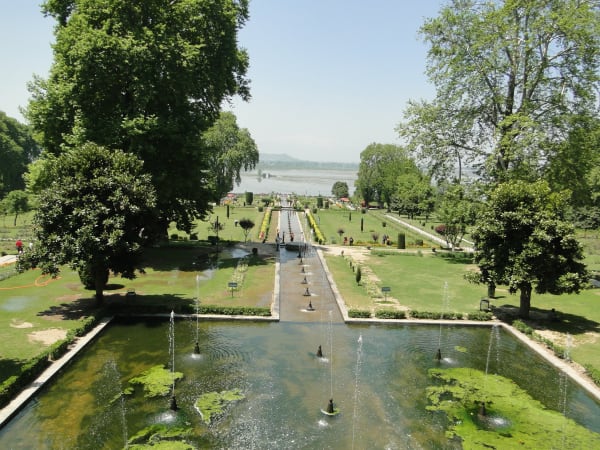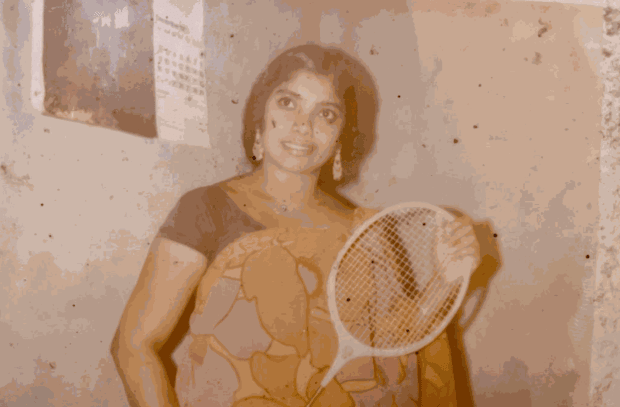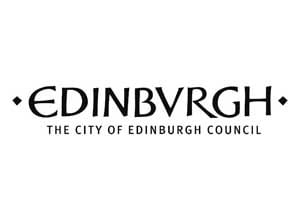The Living Archive is run by the Future Flow Fellowship as part of the From Where I Stand exhibition as a community-focused archive which collects submissions by individuals, documenting their personal relationships with India and Scotland. The aim of the archive is to explore perspectives and histories previously overlooked to create and maintain records of oral histories and shared experiences, past and present, about themes of culture, identity, displacement, heritage, language and colonialism.
We are seeking public contributions for this collaborative resource. Find out more information here.
These will be available to access online as an extension of the curated exhibition space. Offline resources are also available in the exhibition space in Gallery Two.
Explore the Living Archive Map here.
From Where I Stand has been curated by the Future Flow Fellowship and has been exhibited in Ahmedabad at the National Institute of Design, in Delhi at the British Consulate, and in Edinburgh at Edinburgh Printmakers
Future Flow was created by Edinburgh Printmakers and Flow India and is part of the British Council’s India/UK Together, a Season of Culture, which marks the deep connections and 75th anniversary of India.
-
 Photograph and written memory of a Burn’s Supper which took place in Delhi in 2017
Photograph and written memory of a Burn’s Supper which took place in Delhi in 2017 -
Incredible India through the eyes of a Scottish Tourist
Beryl McKinlay -
 Ballochmyle House, Photograph by John McKenzie. Courtesy of Viccy Coltman.
Ballochmyle House, Photograph by John McKenzie. Courtesy of Viccy Coltman. -
-
Scotland and Bengal: Connecting the 18th with the 21st century
Friederike VoigtIn June 2022, a dream came true: I had the opportunity to visit Dhaka. Often my travels are inspired by my work as the curator of the West, South and Southeast Asian collections at National Museums Scotland. I like to follow the trajectories of the people associated with particular objects in our collection. It helps me to imagine their lives and fortunes as they are embodied in their former belongings.
In this case, it was the Scotsman Captain Archibald Swinton (1731-1804). In 2021, the museum received his impressive paintings by Murshidabad artists through the British Government’s Acceptance in Lieu scheme. Swinton is of great interest to me as he witnessed a key moment in the historical relationship between India and Great Britain: the signing of the Treaty of Allahabad between the Mughal emperor, Shah Alam II, and the East India Company (EIC) in 1765. At this event, the emperor granted the company the economic management of his rich north-eastern province of Bengal, making the English the most powerful of the European trading houses in India at the time.
Subsequently, Swinton was sent to Dhaka to enforce the EIC’s rights in the eastern part of Bengal. He made this power shift publicly visible when he took over the Old Fort which had been the residence of the naib nazim, the Mughal deputy governor. The naib nazim was relegated to Nimtali Kuthi, a palace newly built under Swinton’s supervision in 1765-66. This palace, or better, what is left of it, the massive two-storey entrance building of Nimtali Deuri, was my destination. I found the gateway hidden between the modern buildings of the Asiatic Society of Bangladesh. Though they tower over it, they also seem to embrace and protect it, as if to say, ‘look here at this architectural gem’. Research by the Society during the restoration of the gateway has shown that it is the earliest surviving example of a new building style in Dhaka: a Mughal design combined with European methods of construction.
Unsurprisingly, I found it hard to picture Swinton’s Dhaka in a bustling contemporary metropolis of 31 million people. However, there is more to such a visit than tracing the old. I met colleagues from the Bangladesh National Museum and a local university who gave up their time to take me round and to share with me their views on the history of Dhaka, and Swinton’s role in it. These conversations reminded me of the contacts with Indian intellectuals and scholars that Swinton had in the 1760s. One of them, Mirza Sayyad I‘tisam al-Din, travelled with him to Britain. I‘tisam al-Din visited Scotland, among other places, met Swinton’s family and walked the streets of Edinburgh. He and Swinton reflected on their respective religions, societies and the political transformations of their time. Some of this is recorded in I‘tisam al-Din’s memories, Shigarfnama-yi vilayat (Wonder-book of provinces), which he began to write after his return to India in 1769. Since I discovered the English translation of this book, it has opened my eyes for a different understanding of the relationship between Scotland and India in the late 18th century.
-
-
-

-
Voices of the Dead: A Documentary Research on the Scottish Women of Calcutta
Sayan DeyThis documentary research was funded by the Journal of International Women's Studies Fellowship (JIWS), Bridgewater State University, Massachusetts. This research brings forth the various social and cultural roles that were played by Scottish women in Calcutta during the time of British colonization. In the process of shedding light on these select Scottish women, this documentary has also made an effort to complicate the histories of colonialism and the challenges of the decolonial gaze.
-
People Make Glasgow
Ben Allison, Stewart and Jim Sharkey -
 Robin Mair, 2021
Robin Mair, 2021 -
EDINBURGH MILITARY TATTOO
AARON QUIGLEY & STEPHANIE McGUCKEN -
Contribution of Sikhs in Edinburgh
Compiled by Colourful Heritage
-

-

-
Sensory Nerves and Their Landscape
by Nandini Sen Painting by Lucy Stewart (@sounds_sketchy_illustration on Instagram)
Painting by Lucy Stewart (@sounds_sketchy_illustration on Instagram) -
Adventures can be Alternative
by Nandini Sen
-
Hello Nandini,
Hope you are in full spirit.
As promised to you and Indrani
We invite you to visit our friend, a Sea,
The Bay of Bengal.
You will experience the blue-green water,
The sea waves will touch your soul
You will remain immersed in the waterscape.
Breaking waves will ripple up and down your spines
Still grounded you would feel light,
Your sense of self will become completely fluid,
And refreshed by the fried sea fishes and fish stew.
Yes, Nandini you guessed rightly
Our village is just beside the sea
The sea hums,
The gentle waves swish and swash
Nights are different with more vigorous waves
With powerful rhythmic pulses.
Hope to see you and all your other friends there.
Thank you,
Uncle and Aunt.
Nandini, you were feeling so wonderful. You were expecting something very new to explore. To you, the sea waves in such a big water body were very unique. Your nervousness to face the Bay of Bengal, Orissa, India changed into a determination that you would have to conquer the fear and convert it into a big adventure.
Your parents were so empathetic to your nervousness. They were trying to make you aware that you should regulate your anxious nervous system and your body shifted from thinking mode to feeling mode.
You went to join the other friends on that day to catch the morning bus arranged by your friend’s parents. The morning was misty. The bus driver was facing difficulty discerning the path through the fog. Ultimately, you arrived safely. You could hear the deep sound of the sea waves and smell the sea weeds. You couldn’t keep your cool. All the youngsters ran to sea. The jellyfish were lying on the beach. You started to collect sea-shells and discovered a huge conch-shell. All of you changed into swimming costumes and got immersed in the blue multi-sensory experiences. Calmness spread over your bodies bringing in a meditative realm. You people dropped more fully into your bodies, minds, and souls. This is the beginning of the real adventure which you never had in your day-to-day lives.
Your adventure became a way to celebrate your indigenous understanding that you were part of nature. Your urban self had always taught you that signs of nature in your life were silly and sentimental. You never thought that there were signatures which could connect you to a great adventure of escape, imagination and dreams. You not only greeted all your friends but greeted the sea water as well, ‘Hello my new wave, how are you? May I have your permission to delve deeper inside you?’
You and friends anointed yourselves with the salty water asking for the sea’s blessing and protection, noticing its mood, textures and tones before plunging in. You, your friends and your friend’s family all pledged to carry out the adventure with pure intention, care, and respect so that you noticed to read the sea waves with all your attention. Could you hear what the sea was communicating?
Your friend’s parents introduced you all to the place: to the spirits of the water and surrounding forests, as their relatives, and neighbours. You were overwhelmed after learning that healing your senses by the presence of nature is possible. As young adults, you formulated your adventure in an extraordinary way. You became committed to nature to have mutual protection. Nature was not always somewhere you went into; it was not anthropocentric, it had its flora and fauna, its own kingdom with its own rules in harmony with our altruistic adventures. Nature was not always silent. It could get angry if you sculpted its forest into perfect woods and tried to reign over it. Instead, you ventured on the concepts of discovering water, and its aliveness. You swam deeply and attached yourselves to the fingerprints of the water and discovered the biodiversity inside the water with colourful animals, plants, and the changes of colours of the water. You loved the experience of dancing with the sea waves and its living world. Botanist parents of your friend devoted the whole time towards linking you to nature to create your lovely adventure.
Fortunately, you were not in a hurry. Indrani’s parents took you to the distant islands, where you stayed at their private property beside the sea. A new adventure evolved inside you. You thought to experiment with the concept of water as your protector and guardian angel and in turn you were supposed to take care of the sea and the mountains. You walked, and traversed the local ecosystem to know them better and to listen to them. They whispered to you, ‘Hello babies, you are very wise to take care of us and brought back life to us. Tell us how we can reward you.’ You whispered back, ‘Hello sea-waves, please give our blue planet a few more moons so that it keeps its health and live beyond unhealthy environmental changes.’
-
Tangerine Blues
by Moh Mandhyan A monk pictured crouching at the bank of the Ganges river at dawn.
A monk pictured crouching at the bank of the Ganges river at dawn.In the quiet of the golden hour's grace,
By the river's edge, in a tranquil space,
A monk in tangerine, a soul at rest,
In a foreign land, a distant quest.
The sun-kissed robes, a vibrant hue,
A beacon of hope, a world anew,
He sits in stillness, by the water's flow,
In the land of dreams, a long way to go.
His gaze, a bridge to a distant shore,
Where memories dance, forevermore,
Nostalgia's whispers, like gentle streams,
Carry him back to his homeland's dreams.
With every rustle of the tangerine robe,
He reminisces of a far-off abode,
The scent of spices, the colors of home,
In his heart, these memories forever roam.
As the river mirrors the morning's grace,
He finds solace in this tranquil space,
Tangerine blues, a bittersweet song,
Of longing for a place where he belongs.
Though far from home, in a foreign land,
He carries his past like grains of sand,
In the tangerine blues of dawn's embrace,
He finds a moment of nostalgic grace.
-
Routes to Routes
Documentary style interview with Suman and Vinod Vohra as part of the ‘Routes to Roots’ exhibition in 2018. Married in December 1973, the Vohra’s discuss their move from India to Wolverhampton then up to Edinburgh where they put down roots.
ELREC Edinburgh & Lothians ‘Routes to Roots’ project, produced 2018.
-
About Future Flow
Future Flow has been developed by Edinburgh Printmakers and Flow India working with the National Institute of Design, India, Edinburgh College of Art and the Centre for Research Collections at the University of Edinburgh, Edinburgh Napier University, and Queen Margaret University.
The project is supported by The British Council.
It is part of the British Council’s India/UK Together, a Season of Culture, which marks the deep connections and 75th anniversary of India with a landmark programme that strengthens the friendship and vibrant cultural bonds of both countries, while addressing shared global challenges.








































